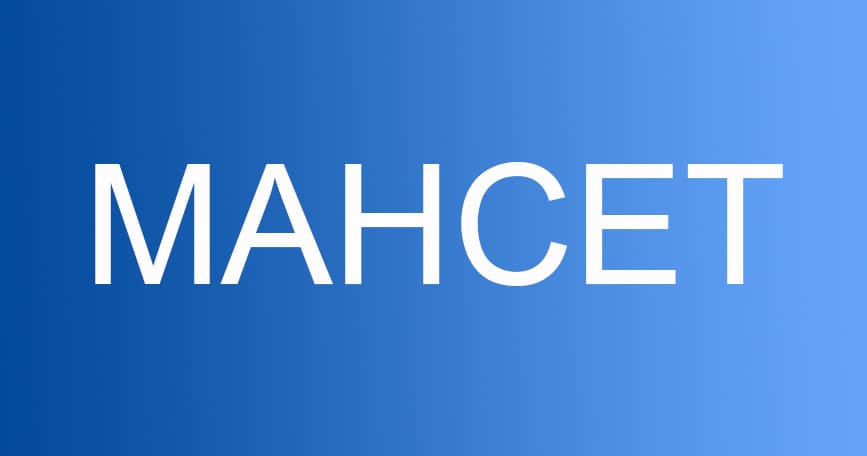Top MBA Entrance Exams In India

COMMON ADMISSION TEST (CAT)
CAT MBA Entrance Exam Test Syllabus:
A Comprehensive Guide
The Common Admission Test, or CAT, is among the most coveted entrance examinations for those aspiring to pursue their MBA in India. Annually conducted by the Indian Institutes of Management, or IIMs, the CAT exam opens the gates for admission into various elite business schools, including IIMs and other top institutions. With thousands of candidates competing each year, a thorough understanding of the CAT MBA Entrance Exam Test Syllabus is crucial for anyone planning to appear for this challenging examination.
Overview of CAT Exam
The CAT MBA Entrance Exam Test Syllabus is structured to measure the proficiency of a candidate in some of the key areas that include quantitative ability, verbal ability, reading comprehension, and logical reasoning. The examination takes place in November, but registration starts a few months before. Understanding the syllabus is the first step towards effective preparation for the CAT exam.
The test is generally divided into three sections:
Verbal Ability and Reading Comprehension (VARC)
Data Interpretation and Logical Reasoning (DILR)
Quantitative Ability (QA)
Each section tests different skills, and a balanced approach is required to crack the test. The CAT exam is a computer-based test, and the duration is 2 hours. The number of questions in each section may vary slightly, but on average, there are about 34 questions in the VARC section, 32 questions in DILR, and 34 questions in QA.
CAT Entrance Exam Test Syllabus Breakdown
1. Verbal Ability and Reading Comprehension (VARC) : VARC section in CAT MBA Entrance Exam Test Syllabus tests your language proficiency, mainly reading comprehension and verbal reasoning. The most relevant topics under this section are as follows:
Reading Comprehension (RC): Passages based on different subjects such as economics, politics, history, and culture. Candidates are tested on their ability to understand, interpret, and analyze written information.
Grammar and Sentence Correction: Error spotting and grammar usage questions.
Para Jumbles: Rearranging sentences to create a coherent paragraph.
Critical Reasoning: Analyzing arguments, assumptions, conclusions, and logical flaws.
To have a good score in the VARC section, read articles in newspapers, journals, and novels to improve comprehension and vocabulary.
2. Data Interpretation and Logical Reasoning (DILR)
The DILR section will test your ability to interpret data and solve complex problems in a logical manner. The subtopics of this section are listed below:
Data Interpretation: This includes tables, bar charts, line graphs, etc. Data representation methods in which questions require you to draw out and interpret data to answer queries.
Logical Reasoning: This includes various types of puzzles, arrangements, blood relations, directions, etc. in logical problems.
To be good in DILR, keep practicing the different types of puzzles and your ability to understand data very quickly and correctly.
3. Quantitative Ability (QA)
The QA section tests mathematical skills and solving quantitative problems. The important topics that are covered are:
Arithmetic: Percentages, profit and loss, time and work, speed and distance, and averages.
Algebra: Linear and quadratic equations, functions, inequalities, and progressions.
Geometry: Circles, triangles, areas, volumes, and coordinate geometry.
Number Systems: Divisibility rules, factors, remainders, and number theory.
Modern Mathematics: Probability, permutations and combinations, and set theory.
For QA, it is imperative to understand the basic concepts and practice a wide range of problems to build speed and accuracy.
CAT Exam Dates and Timeline
The CAT MBA Entrance Exam Test Syllabus is in accordance with the exam dates and timeline, which generally happens on a fixed schedule. Below is a typical timeline:
Registration: The registration process for CAT usually begins in August and continues till September. Candidates must visit the official CAT website to fill in their details and pay the application fee.
Admit Card Release: Admit cards are generally available for download in October.
Exam Date: The CAT exam usually takes place on a Sunday in November. The candidates need to note down the official dates to avoid missing any deadlines.
Result Declaration: The results for CAT are declared in the second week of January. Candidates will be able to check the scores on the official website and access them with their login details.
Selection Process: After the results, IIMs and other institutes will declare their selection process along with GD/PI rounds.
Preparation for CAT Exam
To crack the CAT MBA Entrance Exam Test Syllabus, candidates need a well-planned preparation strategy. Start with understanding the syllabus and divide your preparation time effectively across all three sections. Focus on strengthening your weak areas while maintaining proficiency in your stronger sections. Practice regularly with mock tests to simulate the real exam environment and identify areas for improvement.
Final Thoughts
It’s a large syllabus and so, by itself, is intimidating enough. However, it can definitely be tamed with systematic preparation, effective time management, and constant practice. Preparing well ahead of schedule, keeping focus, and using good quality material will create a strong base. Whether aiming for an IIM or any other premier B-school, acing the CAT will be the only way you can realize your dream of an MBA.

XAVIER APTITUDE TEST (XAT)
The XAT (Xavier Aptitude Test), conducted by XLRI Jamshedpur, is a 3-hour online exam for admission to top management colleges in India. It consists of four main sections: Verbal & Logical Ability, Quantitative Ability & Data Interpretation, Decision Making, and General Knowledge (which is not used in the final percentile calculation). The exam has 100 questions, with a mix of MCQs and non-MCQs, and a negative marking scheme for incorrect answers. Top colleges like XLRI, XIMB, SPJIMR, and IMT Ghaziabad accept XAT scores, with cutoffs generally ranging from 75-98+ percentile depending on the institute. Preparation should focus on core areas like Quantitative Ability, Decision Making, and current affairs.

GMAT
The GMAT (Graduate Management Admission Test) is a standardized exam used for admission to MBA and other graduate management programs in India. It includes four sections: Analytical Writing Assessment, Integrated Reasoning, Quantitative Reasoning, and Verbal Reasoning, with a total duration of around 3.5 hours. The exam is computer-adaptive, meaning the difficulty adjusts based on your responses. The total GMAT score ranges from 200 to 800, with the Quantitative and Verbal sections contributing to the overall score, while Integrated Reasoning and Analytical Writing are scored separately. Top Indian business schools accepting GMAT scores include IIMs (Indian Institutes of Management), SPJIMR, ISB Hyderabad, XIMB, and NMIMS Mumbai, with competitive cutoffs generally ranging from 650-750. Preparation focuses on mastering time management, critical reasoning, and practice in all sections.

COMMON MANAGEMENT ADMISSION TEST (CMAT)
The CMAT (Common Management Admission Test) is a national-level entrance exam conducted by the National Testing Agency (NTA) for admission to MBA and PGDM programs in India. The exam consists of 4 sections: Quantitative Techniques & Data Interpretation, Logical Reasoning, Language Comprehension, and General Awareness, with a total of 100 questions to be completed in 3 hours. The total score ranges from 400, and there is no negative marking for unanswered questions, though -1 mark is deducted for each wrong answer. Top business schools accepting CMAT scores include JBIMS Mumbai, KJ Somaiya, SIMSREE, Goa Institute of Management, and Great Lakes Institute of Management, with cutoffs typically ranging from 90-99 percentile. Preparation involves a strong focus on practicing quantitative skills, logical reasoning, and staying updated on current affairs.

SNAP
The SNAP (Symbiosis National Aptitude Test) is a national-level entrance exam conducted by Symbiosis International (Deemed) University for admission to MBA programs across its 16 affiliated institutes. The exam consists of 3 sections: General English, Quantitative, Data Interpretation & Data Sufficiency, and Analytical & Logical Reasoning, with a total of 60 questions to be answered in 60 minutes. The total score ranges from 0 to 150, with no negative marking for unanswered questions, but -0.25 for incorrect answers. Top institutes accepting SNAP scores include SIBM Pune, SCMHRD Pune, SIESCOMS, and SIIB, with cutoffs generally ranging from 85-95 percentile. Preparation should focus on practicing quantitative aptitude, logical reasoning, and enhancing English language skills.

MAT
The MAT (Management Aptitude Test) is a national-level entrance exam conducted by AIMA (All India Management Association) for admission to MBA and PGDM programs in various business schools across India. The exam is available in both Paper-based and Computer-based formats and consists of 5 sections: Language Comprehension, Mathematical Skills, Data Analysis and Sufficiency, Intelligence and Critical Reasoning, and Indian & Global Environment. The test comprises 200 questions to be completed in 150 minutes. The total score ranges from 199 to 801, with no negative marking for unanswered questions, but -1 mark for each wrong answer. Top institutes accepting MAT scores include ITM Navi Mumbai, UPES Dehradun, AIMS Institutes, and BIMTECH Noida, with cutoffs generally ranging from 60-85 percentile. Preparation involves a focus on quantitative aptitude, reasoning skills, and current affairs.

NMAT
The NMAT (NMIMS Management Aptitude Test) is a national-level entrance exam conducted by GMAC (Graduate Management Admission Council) for admission to MBA/PGDM programs at NMIMS and other participating institutes in India. The exam consists of 3 sections: Language Skills, Quantitative Skills, and Logical Reasoning, with a total of 108 questions to be completed in 2 hours. The score ranges from 0 to 360, and there is no negative marking for wrong answers. Top institutes accepting NMAT scores include NMIMS Mumbai, XIMB, VIT Business School, and ISB Hyderabad (for Executive Programs), with cutoffs typically ranging from 210-240 depending on the institute. Preparation should focus on enhancing language skills, quantitative reasoning, and logical problem-solving techniques.

MAHCET
The MAH CET (Maharashtra Common Entrance Test) is a state-level entrance exam conducted by the Directorate of Technical Education (DTE), Maharashtra, for admission to MBA and MMS programs in various colleges across Maharashtra. The exam consists of 4 sections: Logical Reasoning, Abstract Reasoning, Quantitative Aptitude, and Verbal Ability & Reading Comprehension, with a total of 200 questions to be completed in 150 minutes. The total score ranges from 0 to 200, with no negative marking for incorrect answers. Top colleges accepting MAH CET scores include JBIMS Mumbai, SIMSREE Mumbai, PUMBA Pune, and Welingkar Institute, with cutoffs typically ranging from 95-99 percentile. Preparation should focus on practicing reasoning, quantitative aptitude, and verbal ability, along with improving speed and accuracy.
